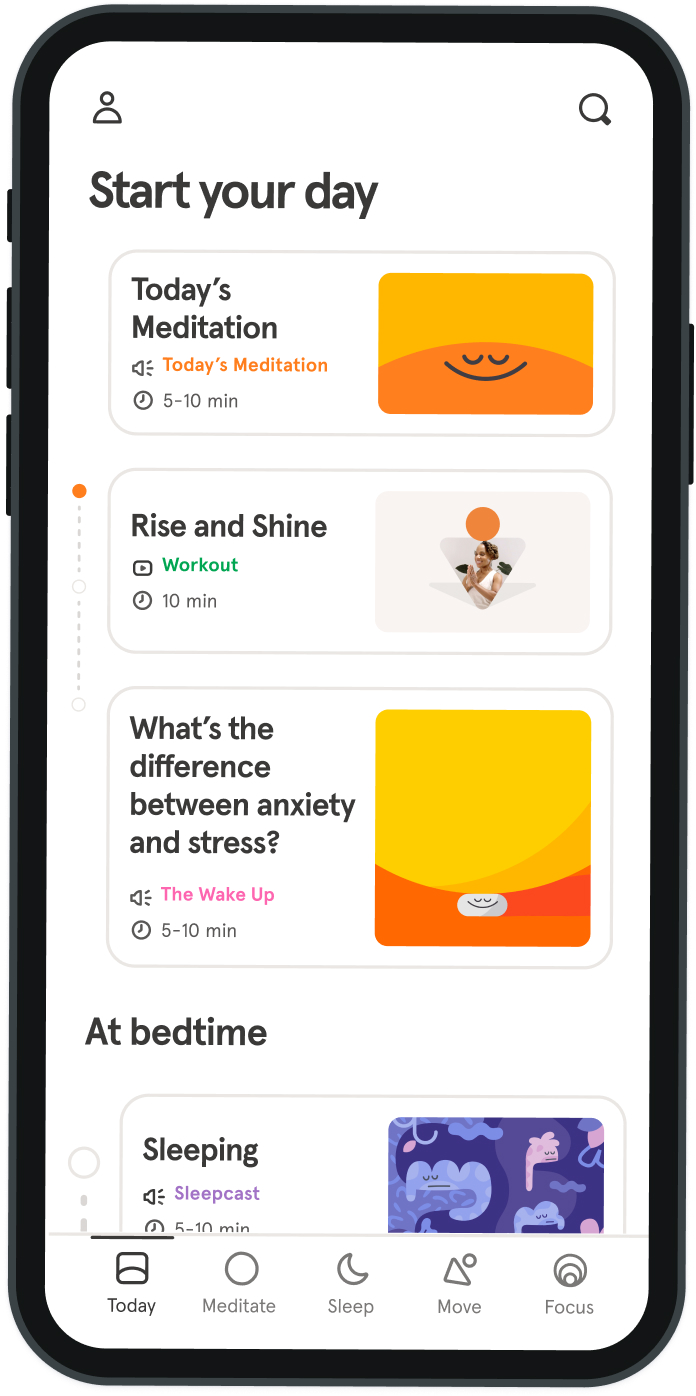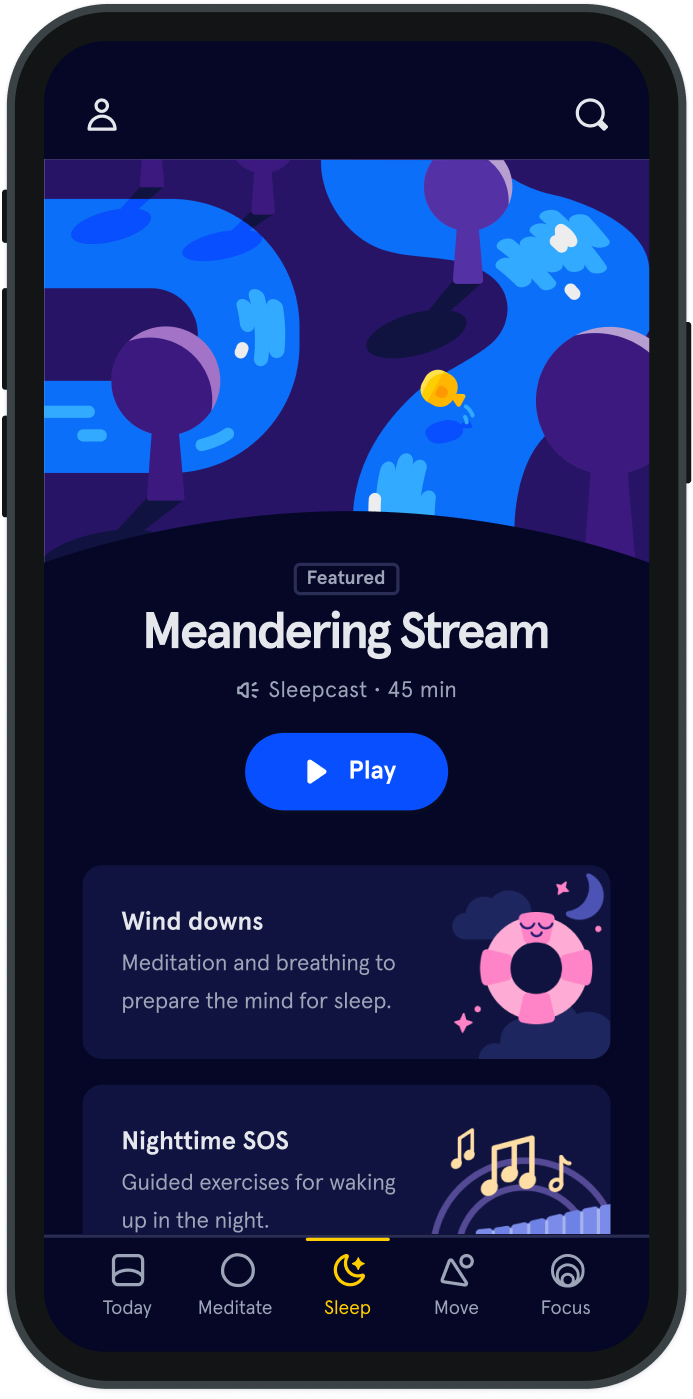How Headspace changed my classroom
Being a teenager is a somewhat ridiculous situation. You have very little control over your life, but just enough awareness to know that you crave independence and responsibility. Your body is raging with hormones, and everything within and without you is changing constantly. And yet, in school, where teenagers spend most of their waking hours, there is very little space to identify, process, or manage these changes and emotions.
With a consistent focus on testing and achievement, schools schedule students for days full of academic work; hours of sitting still at a desk and an expectation that they can compartmentalize their feelings. When those emotions seep through in the form of outbursts, it is seen as misbehavior and is often punished. Recently, the principal of the high school where I teach agreed to let me lead a “Career Readiness” class. As I started drafting its course map, I considered what skills were needed in the real world beyond résumé-building and interview mastery. I thought about a grit and growth mindset, empathy, happiness, and, of course, mindfulness. As my list grew, I noticed that one thread ran throughout: each skill—from how to ace an interview, to how to find long-term happiness—came back to mindfulness: the deliberate awareness of your own thoughts and emotions.
Each class, my students and I practiced mindfulness together. The first day, we sat for three minutes, focusing on our breath and noticing our thoughts. As students were leaving the classroom, one turned to his friend and said: “I’m not gonna lie, that shit felt great!” Some days were short; we’d only sit for a few minutes to catch our breath. Other days we went for longer stretches: ten, even fifteen minutes. One of the things I noticed early on was that my students had a very limited vocabulary to describe what they were feeling. They could talk about their lives eloquently—explain what had happened to them—but could not or would not put words to how their experiences made them feel. So we started small: students would label their emotions as positive, negative, or neutral. That seemed manageable, so we moved to the more abstract; we labeled our feelings in the moment as colors or weather patterns; rather than having to be frustrated or elated, they were light green, foggy, or stormy. Metaphor allowed them to start thinking about the intricacies of emotion in a new way and eventually gave them the ability to recognize and give voice to specific emotions. Students were able to identify a knot in the chest as anxiety, or a subconsciously clenched fist as exasperation. One student recognized a pattern: on the days before basketball games, he was especially tense and on edge. Once he was able to name it, he noted that the tension started to fade. It became such a part of my students’ routine that they began to rely on it. A few weeks into the semester I was away at a conference, and returned the next day to students bubbling with a chorus of frustrations: “Yesterday was awful!” “We said what colors we were feeling, and we told the sub we had to meditate, and she wouldn’t let us!” “It ruined my whole day!” Setting aside the fact that rage is not the emotion I want my students to feel when they don’t get to meditate, I felt that we were off to a strong start.
Mindfulness has given each of my students an opportunity to study and value their own thoughts, emotions, and feelings. Those who may not routinely experience success in other, more academically focused classes have shown particularly wonderful growth. Their ability to speak with clarity about themselves grew, and with it a sense of self as valued members of our school community. I’ve known these students for three years; many of them I’ve taught for their entire high school career. After practicing mindfulness, they sit a little straighter, participate more readily in other components of class, and, over time, have been able to manage their inner selves in new and powerful ways. One student, a soccer player, said he felt like he could focus better during games. Another was able to calm herself after frustrating interactions with her sister. At the end of last semester, they all reported feeling that they had gained a tool to calm themselves. Each of them claimed that mindfulness made them feel calmer, more centered, and more able to do the work of the day. There are changes happening all throughout education: a shift toward Common Core Standards, an emphasis on college-readiness, all of them, in theory, trying to enable students to better navigate the world. Mindfulness is the first addition to my curriculum that allowed my students to make a significant gain in their abilities to articulate themselves. It didn’t come from a Common Core aligned writing strategy, and its success can’t be measured on a Danielson rubric; it came from taking time—as little as three minutes a day—to sit, breathe, and be present.



Be kind to your mind
- Access the full library of 500+ meditations on everything from stress, to resilience, to compassion
- Put your mind to bed with sleep sounds, music, and wind-down exercises
- Make mindfulness a part of your daily routine with tension-releasing workouts, relaxing yoga, Focus music playlists, and more
Meditation and mindfulness for any mind, any mood, any goal

Stay in the loop
Be the first to get updates on our latest content, special offers, and new features.
By signing up, you’re agreeing to receive marketing emails from Headspace. You can unsubscribe at any time. For more details, check out our Privacy Policy.
- © 2025 Headspace Inc.
- Terms & conditions
- Privacy policy
- Consumer Health Data
- Your privacy choices
- CA Privacy Notice
